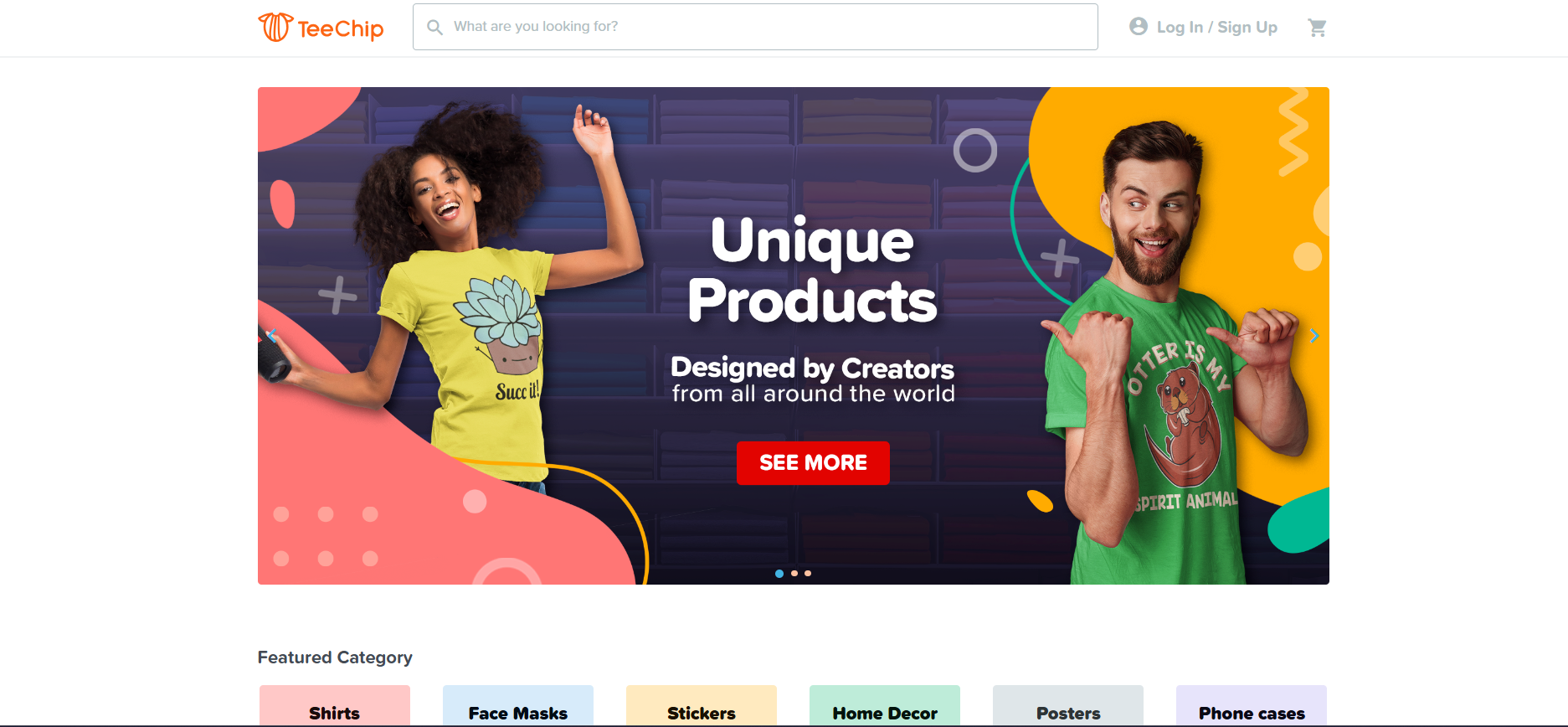Teechip
TeeChip is a print-on-demand marketplace built for entrepreneurs who want to sell custom products online without inventory. It’s part of the Chip family (Chip and TeeChip), focusing on creators who want to launch campaigns, build niche stores, or sell through viral social media marketing. With global fulfillment, easy store setup, and flexible profit margins, TeeChip remains popular among small businesses and independent designers who want control over pricing and marketing. Below you’ll find how TeeChip works, its core features, pros & cons, selling tips, and top alternatives.
How TeeChip Works
TeeChip allows creators to upload designs and sell them on custom apparel, mugs, posters, phone cases, and more. The platform operates on a campaign-based model — you create a product, set your profit margin, and share your product page link. When a customer places an order, TeeChip prints, packages, and ships the item directly to the buyer. Sellers earn the difference between the base cost and their chosen retail price, making it ideal for anyone running niche or viral design campaigns.
Founded: 2014
Cost: Free to use
Payout: Profit margin above base product cost
Fulfillment: Global manufacturing and shipping
Integrations: Facebook & social media ad-friendly product pages
Key Features
Campaign-Based Selling
Launch limited-time or evergreen campaigns — perfect for testing niche ideas or trending designs quickly.
Custom Storefronts
Create your own online store with multiple collections, branded layout, and product categories.
Global Fulfillment
Products are printed and shipped from multiple global facilities to reduce delivery times and costs.
Pros & Cons
Pros
- Completely free to start with no inventory or upfront cost
- Full control over retail pricing and profit margins
- Supports multiple products per campaign
- Easy to share on Facebook, Instagram, or ad platforms
- Global printing and fulfillment network
Cons
- Less organic marketplace traffic compared to Redbubble or Teepublic
- Website design and dashboard feel dated to some users
- Customer reviews online vary depending on region and campaign
- No built-in integrations with major e-commerce platforms
Best For
Entrepreneurs, marketers, and designers who want to run short-term or viral campaigns and control pricing and margins. TeeChip is particularly popular among Facebook ad sellers and niche apparel marketers.
Pricing & Earnings
TeeChip follows a simple profit-based model — you set the retail price, and your profit is the amount above the base cost. Base prices vary by product type and region. You can view estimated earnings in your dashboard, and payouts are sent via PayPal or Payoneer once the minimum threshold is reached.
Content & IP Guidelines
Sellers must upload only original or properly licensed artwork. TeeChip prohibits the use of copyrighted logos, celebrity images, or brand names. To avoid account suspension, ensure your campaigns comply with intellectual property and advertising policies.
Practical Tips to Succeed
- Use strong, high-contrast visuals that stand out on social media ads.
- Test multiple price points and campaign durations to find your ideal profit margin.
- Focus on niches — e.g., hobbies, causes, professions, or holidays.
- Run Facebook or TikTok ads targeting specific audiences interested in your theme.
- Keep product titles short and catchy — optimized for quick clicks.
Where TeeChip Fits in Your POD Stack
TeeChip bridges the gap between marketplaces like Redbubble and marketing-driven POD platforms like Teespring (Spring). It’s especially useful for creators who prefer running their own paid traffic campaigns rather than relying on marketplace discovery. Ideal as a testing ground for viral or cause-based designs before scaling to your own e-commerce store.
Alternatives
FAQ
Is TeeChip free to use?
Yes. There are no upfront fees — you only pay the base cost when an order is placed.
How do sellers earn money?
You set your own prices; the profit is the difference between the retail price and TeeChip’s base cost.
Does TeeChip handle shipping?
Yes. TeeChip manages production, fulfillment, and customer support for every order placed through your campaign.
